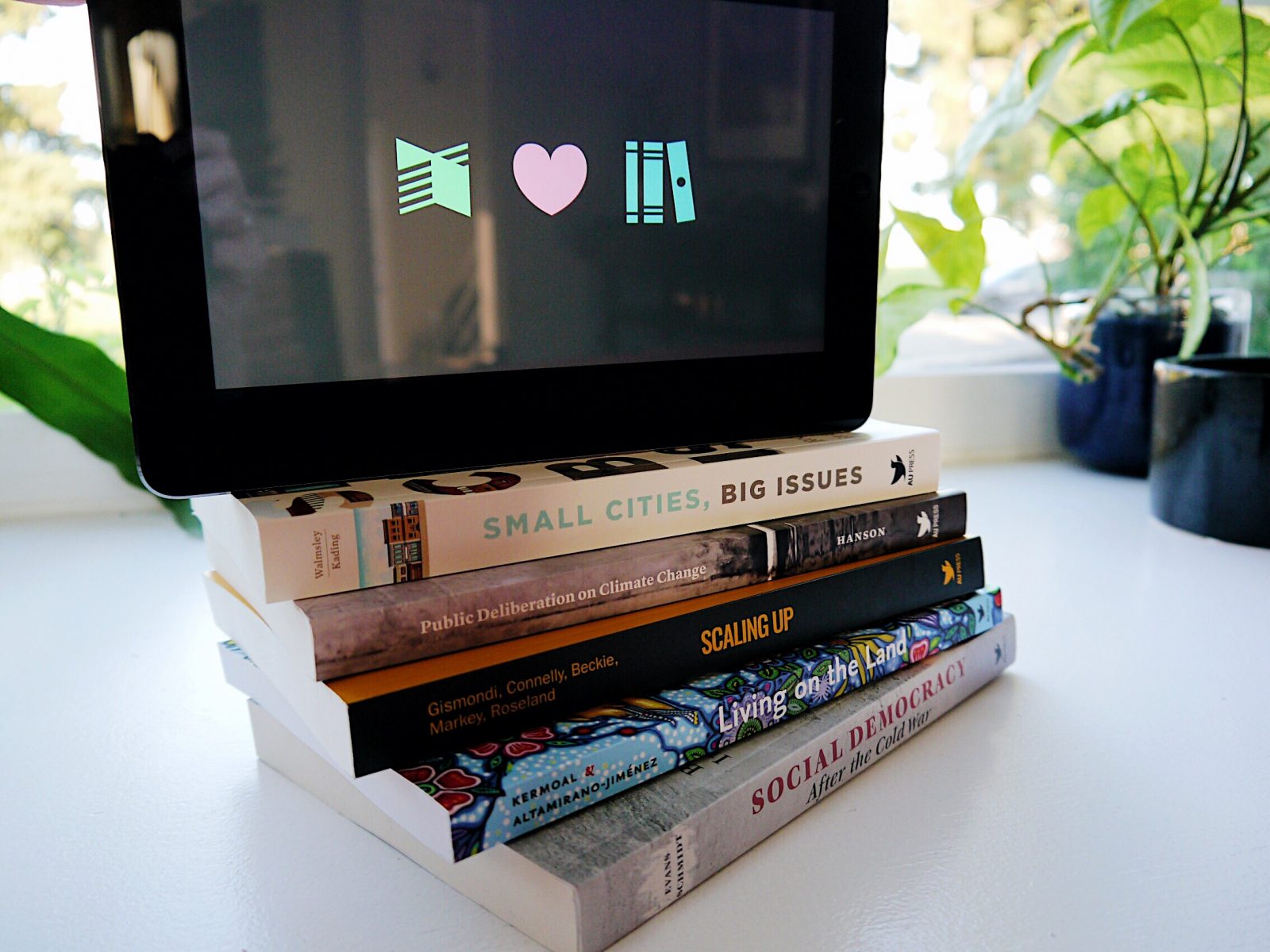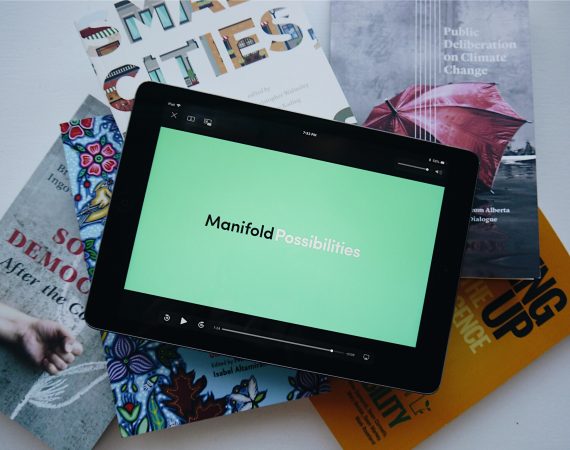Earlier this week, we at AU Press were holed up in a room with Tim Horton’s doughnuts and the University of Minnesota Press’s Digital Projects Editor, Terence Smyre, for a training session on Manifold Scholarship. Manifold is an open-source, mobile-friendly publishing platform that encourages new ways of thinking about the scholarly monograph and publication. You can read more about Manifold and our involvement here. After the training was done and the doughnuts were eaten, we sat down with Terence to talk about the future of digital publishing.
Digital Scholarship
Terence described Manifold as a “text-based platform that seeks to be evolutionary, not revolutionary.” This was such a succinct way of describing what Manifold seeks to do, which is to provide a digital space for people to read and interact with published books. While the platform can also “surface,” as Terence described it, the authorial process by showing early drafts of manuscripts in formation, the most developed aspects of the platform (so far!) are the areas where the reader can interact with the text. Because of the emphasis the platform provides on interacting with a published book and because it doesn’t demand significant changes in a publisher’s workflow, Manifold is scalable and easily adoptable by publishers looking to take their books beyond publication.
Open Access Publishing and Manifold
Open access publishing is a model enabled by technology. In our early days as an open access press, we often encountered the assumption that our digital publications would have all the bells and whistles that the digital space could accommodate. However, our vision of open access has always been centred on the “access” piece. Our mandate focuses on the reduction of barriers to knowledge, and, up until very recently, many of the bells and whistles associated with fancy digital books were producing new barriers and frankly, getting in the way of sharing the work of our authors with readers. What is particularly exciting about Manifold is the possibility of harnessing the opportunities that digital publishing provides, including building a community of scholars and readers, and upholding our commitment to access.
Beyond Publishing
Terence told us that the idea for Manifold originated from a shared desire of both publisher and author to see readers engage with their books in a digital reading environment that was seamlessly connected to other resources. In fact, here on the Open Book Blog we talked about some of those same ideas not too long ago. What we, and others on Twitter, were musing about was the ability to take your dog-eared, scribbled on, Post-It® tagged print books—some of the foundational tools of your research—and replicate that experience in the digital realm. Manifold does that and a lot more. In fact, Manifold’s reading platform allows you to:
Customize your reading experience (think light or dark, big or small type, long or short lines)
Annotate and highlight
Share your ideas and comments with readers and engage with theirs (but only if you want to)
Explore images, videos, data sets, and other digital resources that accompany the text.
What’s Next?
Terence is off to Indiana University Press to help set up their Manifold instance and we are off to experiment with the platform and find out how it can work best for our publications. However, the group doing the heavy lifting right now is Zach Davis and his team at Cast Iron Coding. They are the academics-turned-developers of Manifold who have an aggressive and ambitious development schedule mapped out for themselves. We can’t wait to see what they come up with next!


